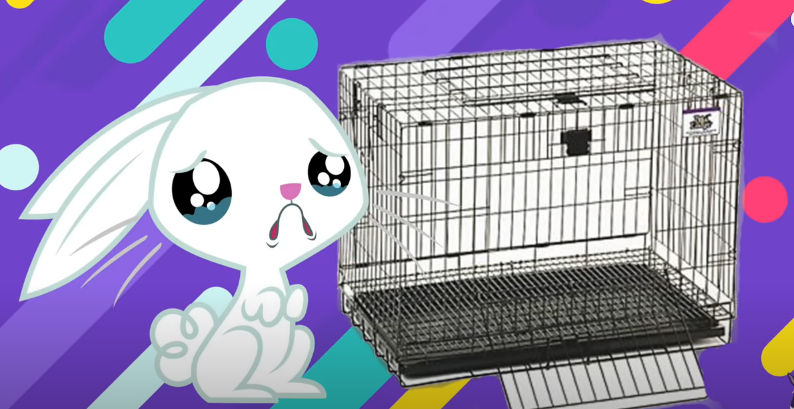Rabbit Care considerations and all information
Rabbits are popular pets, but they require a lot of care and attention.
They need to be fed a high-quality diet, which is usually made up of hay, fresh vegetables, and pellets. They also need fresh water daily.
Their cages should be kept clean and free from any items they can chew on or eat that could make them sick. They also need their cages to have plenty of room to hop around in.
The rabbit is a domestic mammal, not a rodent, fed for its meat and fur, with forelegs shorter than the hind legs, long and erect ears, fast running, fast reproduction, and fast growth. Its Latin name is Oryctolagus cuniculus.
With its large eyes and very large ears, the rabbit is a typical prey animal at the bottom of the food pyramid in the animal kingdom. The dentition of rabbits is similar to that of rodents, except that they have two small incisors in the upper jaw at the back. Because of the difference in the structure of their chewing muscles and blood plasma, they are studied as a separate group from rodents. They live by eating plants in burrows they dig in the ground themselves. They have a very high reproductive capacity. They can give birth to up to 15 young at a time. There are 67 species of rabbits in the world, belonging to 2 families.

Rabbit habitat and cage
For rabbits, you can use a coop or cages of sufficient width. Having plenty of hay where the rabbits live will not only prevent them from getting cold from the ground, but it will also be the perfect environment for them to scatter and mix. At the same time, gnawing on the hay will help the rabbits to keep their incisive teeth, which are constantly growing, at a normal length. This hay or haylage is essential for the healthy functioning of rabbits’ digestive systems. If they are not used, it is common for non-infectious diarrhea and other digestive problems such as trichobezoar to occur. When rabbits’ nails grow too long, they need to be trimmed.
Nail care in rabbits
Overgrown nails can cause pain when stepping on the ground due to the greater proportion of the rabbit’s body weight on the nails, as well as breakage and cracking of the nails. How often rabbits’ nails need to be trimmed depends on the rate of nail growth and wear. If the ground in the area where the rabbits live is hard, the wear on the nails will be greater and the time required for trimming may be longer. The veterinarian should decide when it is time to cut the rabbits’ nails. Cutting your rabbit’s nails before they have grown too long can cause bleeding from the nail. It is normal for rabbits to shed a certain amount of hair daily. However, more shedding is observed especially in the winter and summer months.

Periodically combing your rabbits’ fur will reduce the amount of shedding as it will collect the shed hair. In addition, the hair that rabbits swallow after licking themselves to clean themselves accumulates in their stomach and intestines, forming hairballs called Trichobezoars. Regular combing of rabbits is one of the factors that will help us to prevent this disease, as it will reduce the amount of hair to be swallowed.
Drinking water in rabbits
Another very important issue in rabbit nutrition is the problem of rabbits drinking water. Some people say that rabbits do not need to be given water. On the contrary, rabbits should be given clean, non-cold water daily. Nothing should be added to the rabbits’ water. Rabbits have a very good sense of smell, so adding anything to their water will reduce their water consumption. Finally, rabbits should be given fresh water daily.

Rabbit habitat
The rabbit’s environment should not be noisy. Especially sudden noises should be avoided. If we give an example of this sudden noise, hitting something with a hammer or throwing a hard object on the ground will disturb the rabbits. Of course, the constant presence of such disturbing noises will stress the rabbits and cause them to get sick. The temperature of the rabbit’s environment is also important. Rabbits should be kept at 10-30 degrees.
The optimum temperature is between 15-25 degrees. This environmental temperature should be given importance. Because there may be people trying to keep rabbits on the balcony in winter. In regions with high ambient temperatures in summer, wetting the rabbit’s ears with water at noon will make it a little more comfortable.

Hygiene in rabbits
The cage or any compartment where the rabbits are kept should be cleaned periodically. Since rabbits are usually kept in a cage, the cage should be cleaned at the same time as the feeder, drinker, and other equipment. Rabbits usually leave feces and urine in one place in the cage where they are kept, and because of this feature, they can be given toilet habits. Since they defecate and urinate in one place, more dry straws should be placed in this area. In every cleaning period, this dry straw is thrown away and replaced with a new one. When cleaning the cage and equipment, disinfectants that are diluted to a certain extent and do not harm the rabbit should be used. Cages and equipment should be rinsed with plenty of water 15 minutes after this application. Rabbits should not be bathed. Rabbits clean themselves very well on a daily basis. A good observer will easily notice this.
Gnawing in rabbits
For rabbits, gnawing is a way of life, not a habit. They gnaw to protect their health, not to harm humans. Rabbits should always be given something to gnaw on. The best gnawing tools we can recommend are hay, dry grass, wood, and pieces of wood. Straw and hay in particular are harmless abrasives for rabbits’ incisors. They also contain cellulose, which is essential for their digestive system to function properly. The daily diet of rabbits must contain a certain amount of cellulose. If hay and haylage are not part of the rabbits’ daily diet and you are feeding them a cellulose-poor diet, give them pieces of wood and wood chips to gnaw on. Rabbits may be tempted to eat some of these. This is because these pieces of wood and wood chips contain cellulose.
Although rabbits do not belong to the class of rodents in the zoological system, gnawing is a necessity for them. This is because rabbits’ teeth are constantly growing. Gnawing on things allows rabbits to file down their teeth and keep them the size they need at all times. When rabbits can’t find things to gnaw on, their overgrown teeth prevent them from chewing and taking in their food, which can lead to death after a while. Rabbits need to constantly gnaw to prevent this from happening and are very busy creatures. Since rabbits need to constantly file their teeth, the quality of the objects they gnaw on is not so important to them. They will try to gnaw on anything that suits their oral structure, even if it’s not food.
Caring for rabbit offspring
Newborn rabbits are very sensitive to the cold. Rabbits without a good home or outside the birth cage can die from the cold. For this reason, rabbits should be checked shortly after birth. The born rabbits are counted and the weak and dead ones are removed. Their nutrition and health status are monitored. A good mother can raise 8 or more litters. If it is known from the previous litter how many litters the mother can raise, this number of animals is left with the mother. Excess litters of mothers who have given birth to more cubs than they can care for, or whose mothers have died for any reason after giving birth, can be distributed to other mothers who have just given birth. When doing this, it is best to remove the mother from the cage for a few hours. Otherwise, the mother rabbit will smell the foreign odor and reject the offspring. In breeding facilities, the balancing of litter makes parental control difficult. In such cases, the offspring should be marked or given to a breed with obvious differences.
Do rabbits eat their babies?
Sometimes females eat their young. This is called cannibalism. Cannibalism can be inherited, but it can also be caused by the mother being malnourished, dehydrated, frightened, etc. during pregnancy and after birth. Breeders who eat their offspring in both births should be removed from the herd. Care and feeding should be done during the most sensitive periods. Death is most common in the first three days after birth. In the 2nd – 5th weeks, infections can be seen in the digestive organs. In the 6th – 16th weeks, precautions should be taken against coccidiosis. On the 18th – 21st days, puppies start to eat feed in addition to their mother’s milk. In this period, along with grain feed, hay and fresh grass can also be given, but not too much.
Feeding rabbit kittens breast milk
Determining the weight of the rabbits at 18 days of age gives an idea of the mother’s milk production. This can be used to select females. 8. Weaning Although rabbits can give milk up to 6 or even 8 weeks, the young can be weaned at 4 weeks to increase the number of young per dam per year. The healthiest method of weaning is to move the mother to another cage. The young can be reared in groups of 2 or 3 with no more than 10 days age difference, or in groups of 8 – 12 rabbits per m2 or 1 m2 of fattening cage. During the fattening period, there should always be enough feed and clean water in front of the rabbits.

